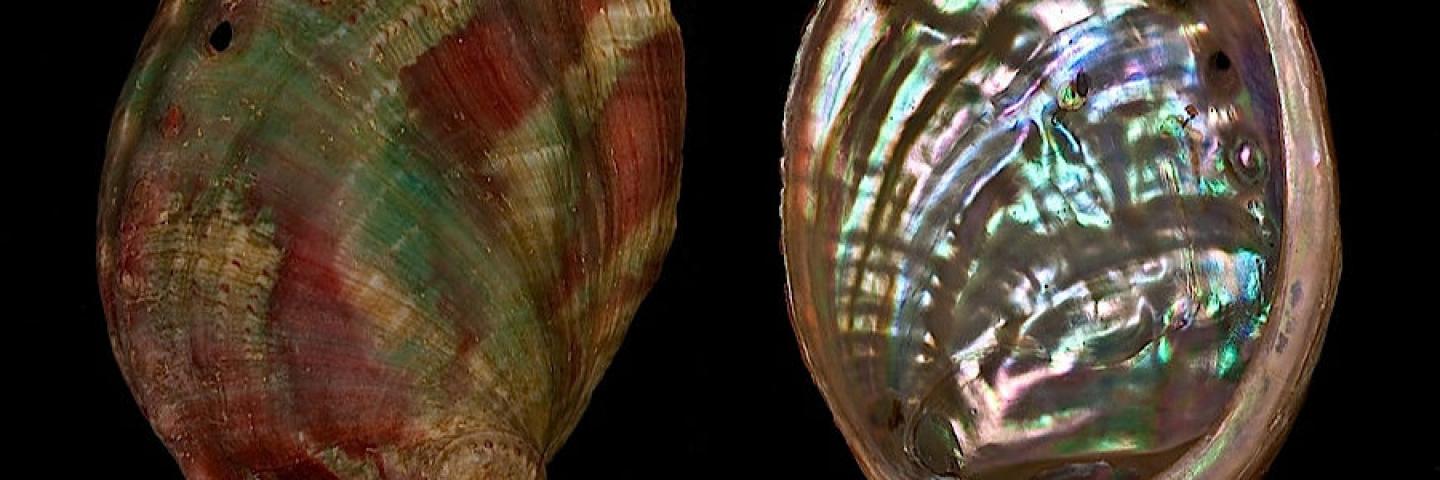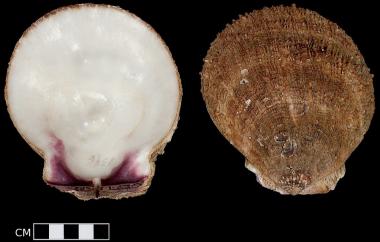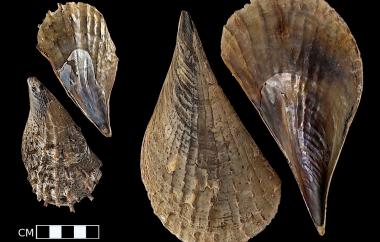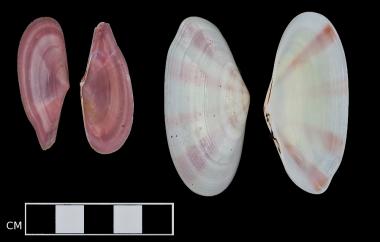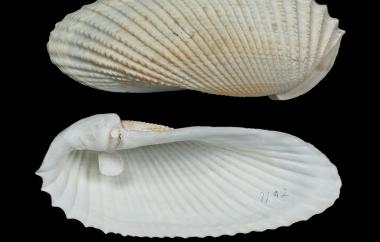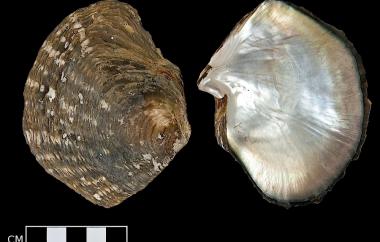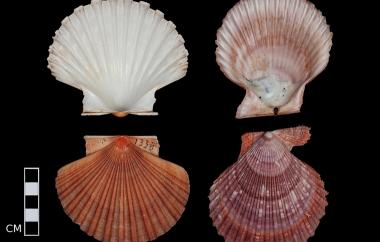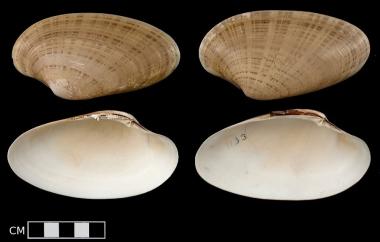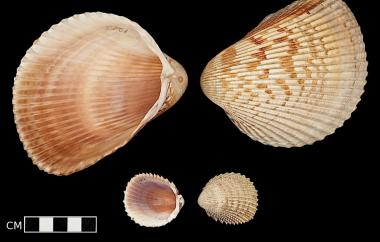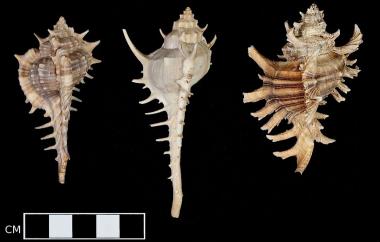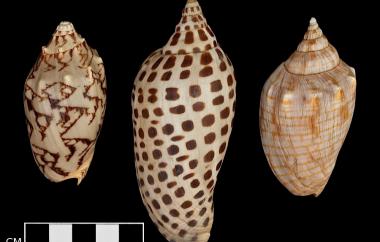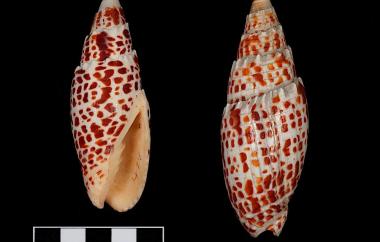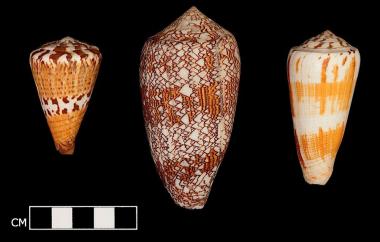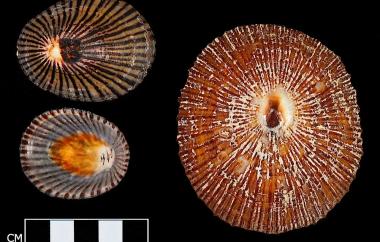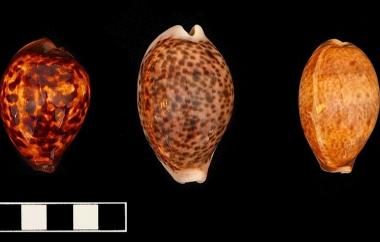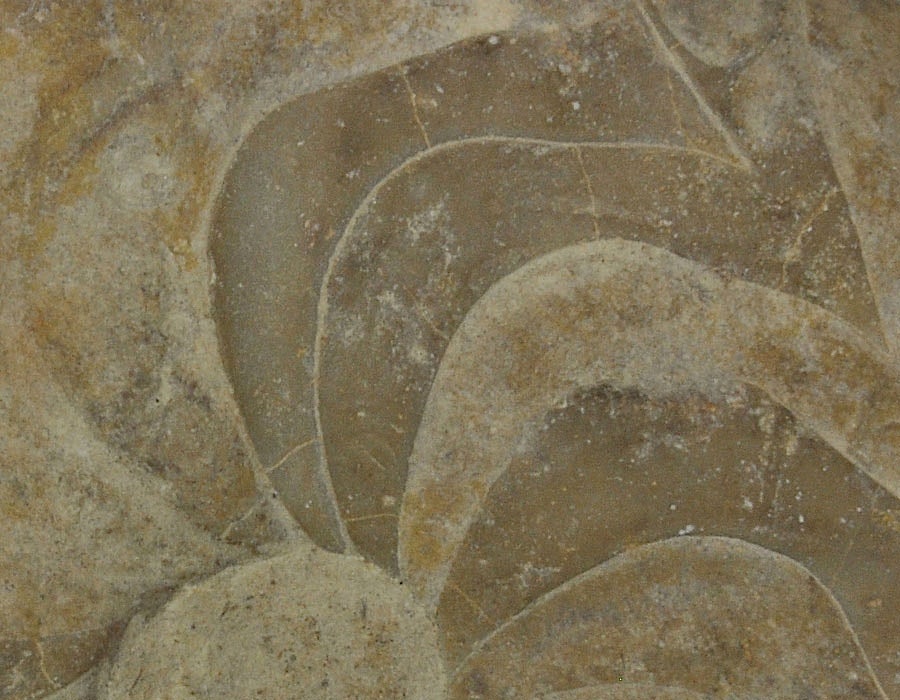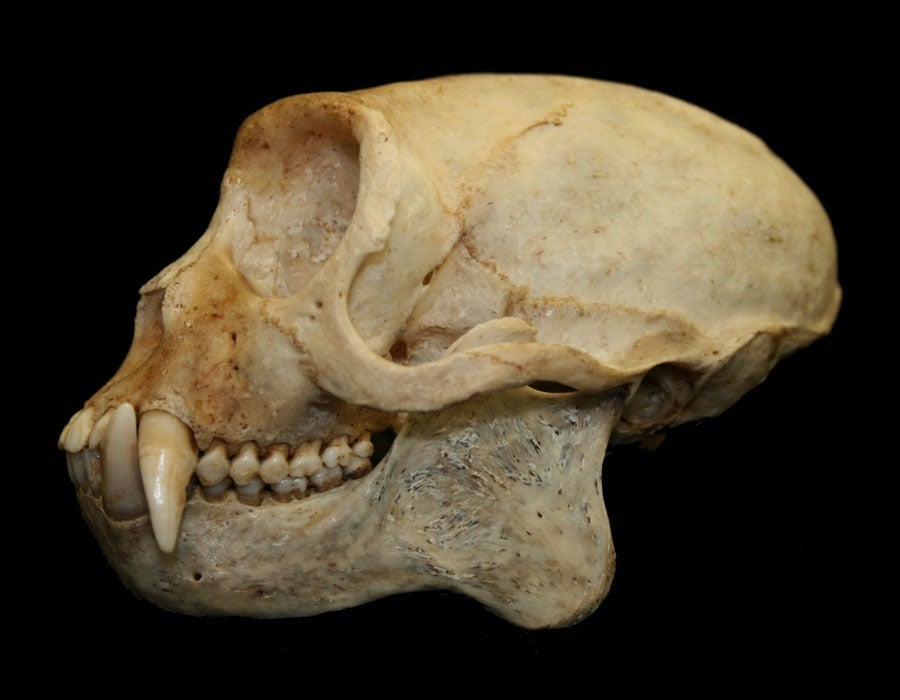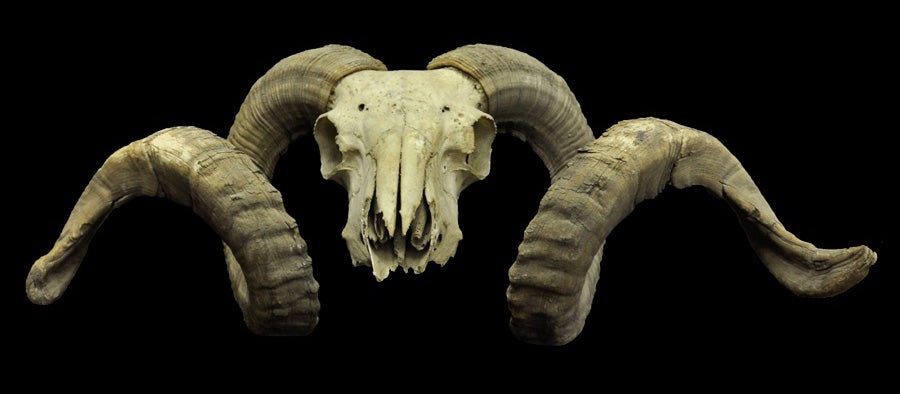Marine shells have captured the human imagination for millennia. Shells—the hard, protective exoskeletons created by mollusks and other animals—first appear in the fossil record about 500 million years ago. Since then, marine shells have evolved into an amazing array of shapes, textures, and colors intricately adapted to the specific environments in which each species lived.
For hundreds of thousands of years, our ancestors have collected shellfish for food. Only in the past 150,000 years, however, have shells been used for other purposes: as beads, ornaments, symbols, and money; as sources of dye, pigments, and lime (CaCo3); and as raw materials for making a wide range of tools. As the field of natural history became popular in western societies, shells also became objects of study, pleasure, and obsession for numerous collectors. Many families of marine shells have similar characteristics worldwide, so that cowries, cockles, and other types can be recognized on beaches from Australia to Asia, Africa, and the Americas.
Here we present images of a small sample of marine shells from the Herbert P. Wisner Shell Collection, donated to the museum in 1992. The collection contains over 6,200 specimens from around the world—most of them marine, but also including some freshwater, land, and tree snail shells. Curated under MNCH Accession #818, the collection was purchased in the 1960s by Edmund Wisner from the estate of Fred Tobleman of Loch Arbour, New Jersey, then expanded over the years with specimens donated by Blanche Kortright.
The museum's other marine shell collections emphasize fossil specimens and cultural uses across thousands of years. These are used by a variety of researchers interested in the evolution of shells, marine ecosystems, human foodways, and more.
Images © UO Museum of Natural and Cultural History. Production of this gallery was generously supported by The Ford Family Foundation.
Further Reading:
Eisenberg, J.M.
1981 A Collector's Guide to Seashells of the World. New York: McGraw-Hill.
Stix, Hugh, Marguerite Stix, and R. Tucker Abbott
1968 The Shell: Five Hundred Million Years of Inspired Design. New York: Abrams.
Rock Scallop, Hinnites multirugosus
California
Stiff Penshells, Atrina rigida
Boca Ciega Bay, Florida
LEFT: Sunrise Tellin, Tellina radiata, West Florida
RIGHT: Tellin, Tellina perrieri, Japar
Angel Wing, Barnea costata
Key West, Florida
Pacific Pearl-Oyster, Pinctada margaritifera
Eastern Seas
LEFT: Great Scallop, Pecten jacobaeus, Mediterranean
RIGHT: Vietnamese Scallop, Mimachlamys crassicostata
Root Murex, Muricanthus radix
Panama
Sunrise Venus, Macrocallista nimbosa
St. Petersburg, Florida
LEFT: Florida Pricklycockle, Trachycardium egmontianum, Kortright Collection
RIGHT: Giant Cockle, Dinocardium robustum, West Florida Atlantic
LEFT: Murex, Vokesimurex elenensis, Lower California
MIDDLE: Harrowed Murex, Murex occa, Philippines
RIGHT: Leafy Murex, Chicoreus (Triplex) brevifrons, Aruba, Antilles
LEFT: Bat Volute, Cymbiola vespertilio, East Indies,
MIDDLE: Juno's Volute, Scaphella junoni, Banabol Island, Florida
RIGHT: Gold-Banded Volute, Harpulina arausiaca, Sri Lanka
Papal Mitre, Mitra papalis
Tuamotu Archipelago
LEFT: Captain's Cone, Conus capitaneus, West Africa
MIDDLE: Textile Cone, Conus textile, Indo-Pacific
RIGHT: Magician's Cone, Conus magus, Philippines
Limpets
RIGHT: Cellana nigrolineata, Japan
LEFT: Cellana argentata, Molokai
LEFT: Deceptive Cowry, Zoila decipiens, NW Australia
MIDDLE: Panther Cowry, Cypraea pantherina, Indian Ocean
RIGHT: Lynx Cowry, Lyncina lynx, Red Sea
